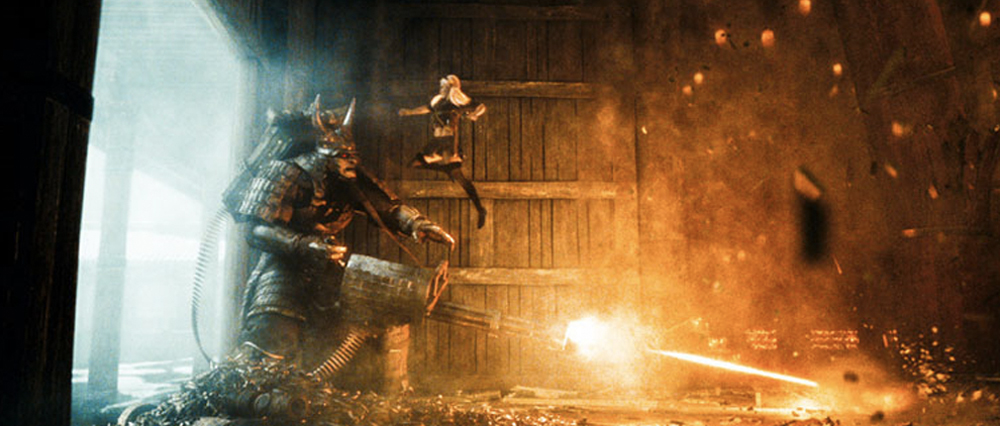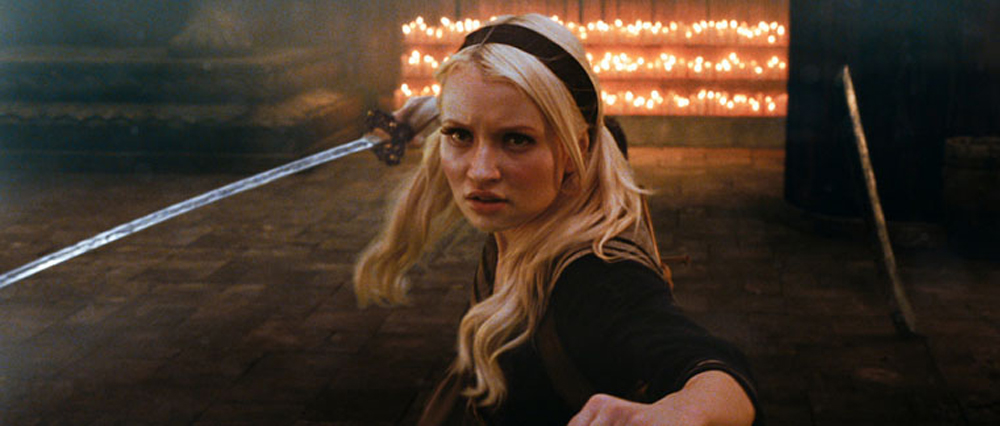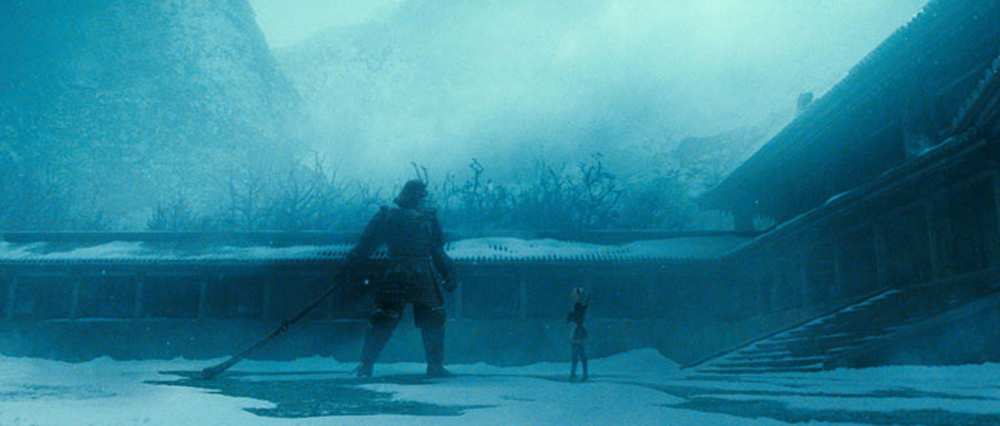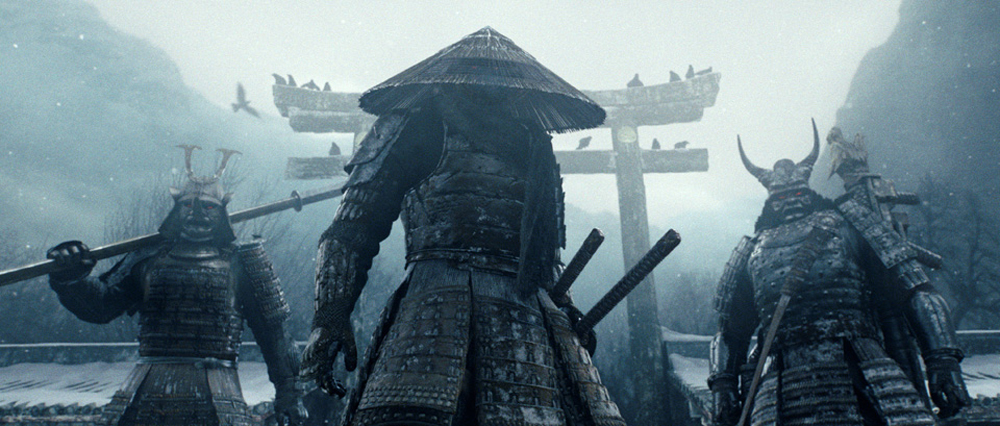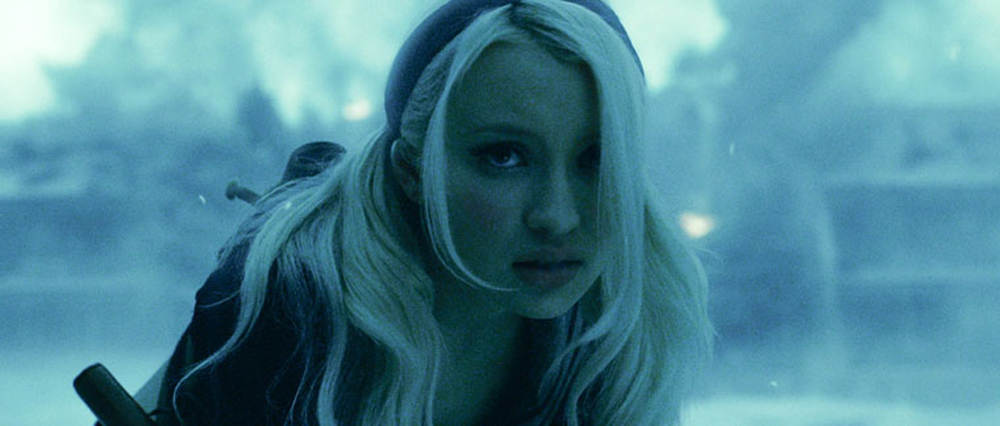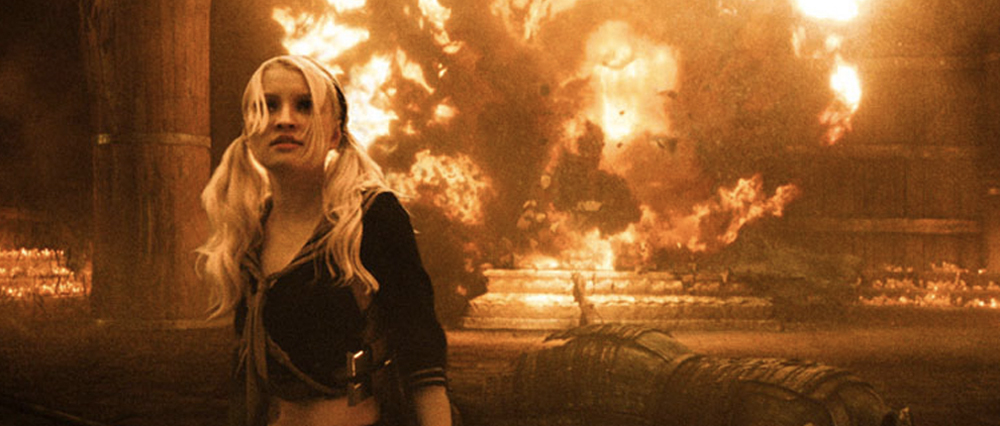Since his interview about PERCY JACKSON, Guillaume Rocheron worked on SUCKER PUNCH.
How was your collaboration with director Zach Synder and production VFX supervisor John “DJ” Desjardin?
It’s been a truly great collaboration. Zack and DJ always communicated to us very clear ideas of where they wanted to go regarding the action and the visuals and got us involved to help plan things out as well as possible right from pre-production. We worked on a daily basis with DJ to make sure we were all working towards Zack’s vision.There was a great level of trust from everybody on the project and having clear directions really helped us focusing on the final result.
Can you tell us how MPC has become involved on this film?
MPC already had a relationship with Zack and DJ from WATCHMEN. We got involved very early on SUCKER PUNCH to start discussing how we would achieve the Samurai sequence. The first idea was to find out how to capture stunts fights, retargeting those moves onto our giant samurais, with minimal footprint on set, so Zack and Damon Caro, the stunt coordinator, could design the fight and the moves without too many constrains. The second point was to explore different options to help the stunt team achieving some of the complex moves by doing CG takeovers to extend or piece together different moves. We ended up doing a mini 6 shots test sequence illustrating each scenario.
What are the sequences made by MPC on this film?
We’ve made Babydoll’s first fantasy, the Samurai Adventure which represented most of our shots. We’ve also done some work for the ending of the movie.
What references have you received for the establishment of the temple and samurai?
We received some original concept frames produced by the art department and Aaron Sims for the samurais. Those illustrations weren’t actual designs but more mood boards, showing the style and the atmosphere. We then internally worked on refining those concepts into detailed characters and environments.
How did you create the environment and the temple?
The art department provided us with blueprints, that would define the main layout of the temple. Using these and the moodboards, we started to block in more precisely how each features would look like, the architecture of the roof, ceiling, walls and columns, the look of the candle racks etc… Knowing we would have to destroy the temple during the sequence, everything had to make sense regarding how the temple was put together. Our lighting team worked out some pretty elaborated solutions for the complex illumination inside the temple. There are thousands of candles in there, all flickering, with different intensities.
Can you explain the creation of the samurai?
Using original illustrations as a base for how each samurai had to feel, we then fleshed out proportions of the underlying bodies and started to collect every single possible samurai armour references we could find. It was some sort of puzzle game, testing out combinations that would look visually interesting but making sure things were coherently put together. Traditional samurai armours are very cleverly designed, to be strong but very light and flexible at the same time. Since our samurais had to go through some pretty wide range of movements, we modelled and rigged every little ropes and strings that are keeping all the different panels together and that help to articulate the various pieces together. Because the samurais are so big compared to Babydoll, our texture team painted a huge amount of maps for each samurai so each body part could be seen very close up.
Did you create previz for the fight choreography and the shooting?
The test sequence we’ve done early on helped to validate how we would plan and capture the whole sequence. We just used 3 pro-consumer HD cameras and grey suits with tracking bands. The stunt team worked on the fight design ahead of principal photography and, as sections were blocked out, we would go there and capture the moves. Back at the studio, we would process them and roughly transfer the animation onto our giant samurais, so we could then work with Zack and DJ on framing, camera position and where the action was happening within the digital pagoda. That stage that we ended up calling “techvis”, helped to categorise how each shot would be approached. Some shots would be a Babydoll’s stunt double and we would replace her face in post, some shots could be performed by Emily Browning, some other shots would be digital takeovers to extend what was beyond possible to shoot and finally some shots would be entirely digital. It became a guide during principal photography for lighting, eyelines and continuity.
How did you create the digital double for Baby Doll?
We based her model and textures from cyberscans and high resolution photos. The skin gave us loads of problems to match since it had to look so clean and perfect. It was a fine balance in every shot to not have her looking plastic. The long hair groom and simulations were done with our fur software, Furtility.
Can you explain how was the shooting of this sequence? What was the real size of the set?
The shoot happened on a soundstage at the Vancouver Film Studios. There was a full 360 degrees greenscreen and a full tiled floor. As often as possible, Babydoll was shot against that tile floor so we would get good contacts but there are some shots where she is completely over green since the ground gets destroyed by impacts. The entrance stairs of the pagoda were a set piece as well as the altar where Babydoll talks to the Wiseman. The altar, as the rest of the pagoda, becomes all CG as soon as the fight starts since it gets completely atomised by the samurais.
How did you handle the destruction of the temple and its final collapse?
To deal with the details required for all the slow motion wood destruction shots, our R&D team developed a brand new toolkit called Kali. Unlike rock or concrete, wood is a malleable surface that bends, cracks and then shatter and rigid bodies solutions weren’t really adequate for this type of effect. We integrated in our pipeline a finite element solver called DMM from Pixelux to deal with bendable surfaces. It enabled our TDs to define precise properties to each material so they would be break in a very realistic way. Metal would shear and bend while wood planks would bend, crack and fracture in thousands of splinters. I really love in some shots, how you can see the cracks getting propagated through the surfaces before they start breaking.
Have you developed specific tools for the snow or fire?
Not really. We used our usual particle and fluid tools. The challenging thing was that we did all our animation and simulations in slow motion at 100fps instead of the usual 24fps. Our R&D team developed a full 3D retime pipeline so retime curves from editorial would be applied at render time. But that meant we had to rework all our existing techniques to work well in slow motion.
What was the biggest challenge on this project?
There were many but I would say keeping the look consistent with the amount and complexity of elements that went into every shot was the biggest one.
Was there a shot or a sequence that prevented you from sleeping?
No shots in particular prevented me from sleeping as we were well prepared. Some shots, of course, were harder to pull like the slow mo full screen takeover on Babydoll when she defeats the 2nd samurai or some of the big destruction shots but overall I think we approached the project in the right way.
How long have you worked on this film?
In total a little less than a year and a half but the actual production time was around 9 months.
How many shots have you made and what was the size of your team?
150 shots with 70 people.
What did you keep from this experience?
The great collaboration with Zack and DJ, the fantastic material we had to work on and all the hard work and dedication of the team at MPC
What is your next project?
I can’t really talk about it for now.
A big thanks for your time.
// WANT TO KNOW MORE ?
– The Moving Picture Company: SUCKER PUNCH dedicated page on MPC website.
– fxguide: fxpodcast about SUCKER PUNCH.
© Vincent Frei – The Art of VFX – 2011


